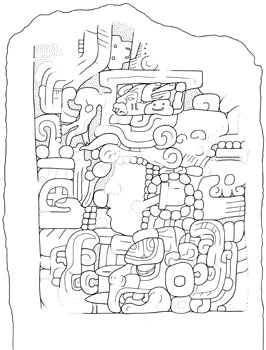The discovery was made earlier this year in Guatemala at the site of Naachtun, a Maya city located some 90 kilometres through dense jungle north of the more famous Maya city of Tikal. The woman?s face, carved on a stone monument called a stela [STEE-la] ? and in an artistic style never before seen ? suggests women played significant roles in early Maya politics.
?I?ve worked in the Maya area a long time and I?ve never seen anything like it,? says Dr. Kathryn Reese-Taylor, the director of the U of C-led Naachtun project. ?We have images of queens, who ruled both singly and with their husbands or sons, depicted on stelae later in Maya history beginning in the early 6th century AD. But this stela is completely unique in style and likely dates to the 4th century AD.?
 The woman could be a figure from Maya history, but researchers are tantalized by the possibility she might be a mythical figure. Hieroglyphic inscriptions of the Late Classic period (600-900 AD) mention female deities, but none have ever been discovered on a stela. ?If this is a patron deity, then it is extremely rare,? Reese-Taylor says. ?When hieroglyphic texts do mention women, it is usually in the context of being either someone?s mother or someone?s wife.?
The woman could be a figure from Maya history, but researchers are tantalized by the possibility she might be a mythical figure. Hieroglyphic inscriptions of the Late Classic period (600-900 AD) mention female deities, but none have ever been discovered on a stela. ?If this is a patron deity, then it is extremely rare,? Reese-Taylor says. ?When hieroglyphic texts do mention women, it is usually in the context of being either someone?s mother or someone?s wife.?The stela measures two metres in height, one metre in width, and 50 centimetres in depth. It was buried by the Maya inside an ancient building after their city was attacked and the inscriptions on the stela were hacked off by the invading forces. The burial was a reverential act meant to honour the individual whose image was carved on the monument. An infant?s burial accompanied the stela.
DRAWING OF STELA. Image courtesy of THE UNIVERSITY OF CALGARY
No comments:
Post a Comment